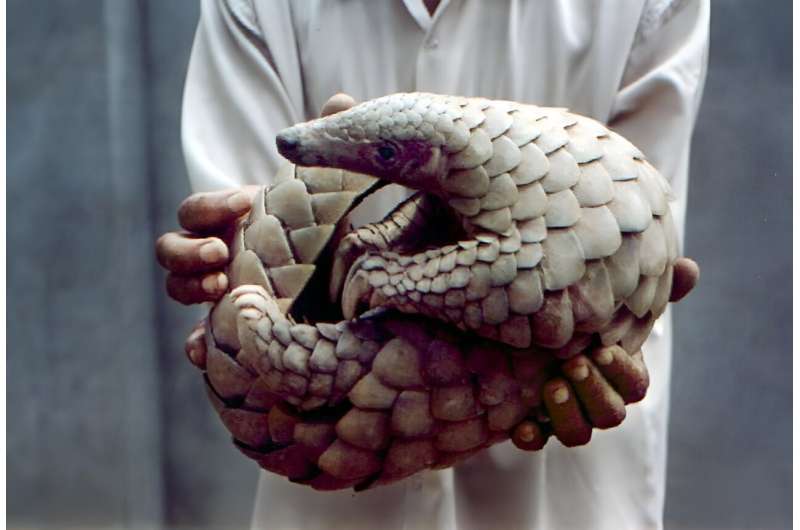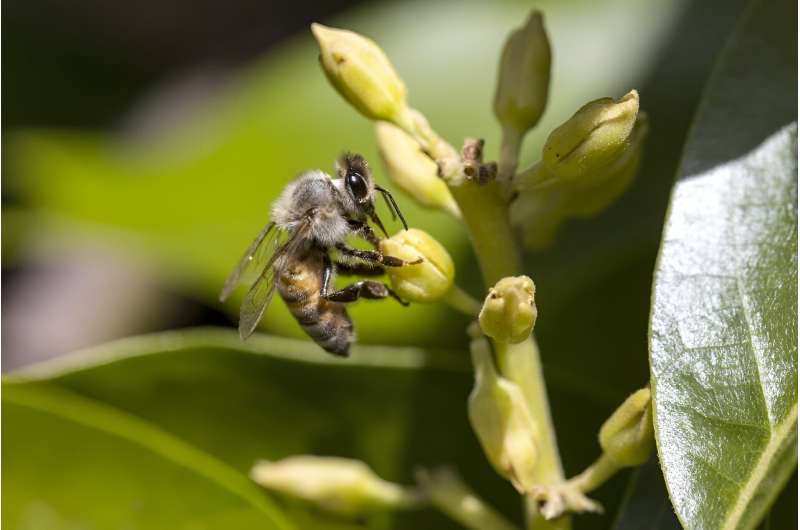Some insects, such as ants and bees, navigate visually based on the intensity and polarization of sunlight.
Although human-caused climate change threatens the environment, nature continues to inspire our technological advancements.
Evripidis Gkanias, a researcher at the University of Edinburgh, said: “The solutions provided by nature have evolved over billions of years and are repeatedly tested every day since the beginning of time.”
Gocañas is particularly interested in how nature can foster artificial intelligence.
“Human creativity may be fascinating, but it cannot match the robustness of nature, and engineers know this,” he told AFP.
From a compass that mimics an insect’s eye to a forest firefighting robot that behaves like a vine, here are this year’s picks for nature-based tech.
insect compass
Some insects, such as ants and bees, navigate visually based on the intensity and polarization of sunlight, using the position of the sun as a reference point.
Researchers replicated the structure of their eyes and built a compass that could estimate the sun’s position in the sky even on cloudy days.
Ordinary compasses rely on the earth’s weak magnetic field for navigation and are easily interfered by noise from electronic devices.
The prototype of the light-detecting compass “already works very well,” said Gocañas, who led the study published in the journal Communications Engineering.
He added that “with the right funding, this could easily be transformed into a more compact, lighter product” that would be free to use.
With further adjustments, the insect compass can work on any planet where a large celestial light source is visible.

Inflatable robots “grow” in the direction of light or heat.
water collection network
Fabrics inspired by the threads of spider webs that collect drinking water from morning fog could soon play an important role in water-stressed regions.
Rayon is sourced from feather-footed spiders, whose intricate “spindle knots” allow large water droplets to move and collect in their webs.
Zheng Yongmei, co-author of the study published in Advanced Functional Materials, told AFP that once the material could be produced on a large scale, the collected water could potentially reach “a sizeable scale for practical applications”.
fire vine
Animals are not nature’s only source of inspiration.
Scientists have created an inflatable robot that can “grow” in the direction of light or heat, much like vines climbing up walls or across the forest floor.
The tube-like robot, about two meters long, can be driven using a fluid-filled bag instead of expensive electronics.
Over time, the robots can find hot spots and deliver extinguishing agents, say UC Santa Barbara researchers.
“These robots are slow but OK for fighting smoldering fires, such as peat fires, which can be a major source of carbon emissions,” co-author Charles Shaw told AFP.
But before robots can climb terrain, they need to be more heat-resistant and agile.
kombucha circuit
Scientists at the University of the West of England’s Unconventional Computing Laboratory in Bristol have found a way to create “kombucha tea” using sticky kombucha pads – produced by yeast and bacteria during the fermentation of the popular tea drink. electronic product”.

Pangolins resemble a cross between a pinecone and an anteater.
Scientists printed circuits onto dry mats that illuminated small LED lights.
Dry kombucha pads have the properties of textiles and even leather. But the authors say they are sustainable, biodegradable and can even be soaked in water for days without being destroyed.
Lead author Andrew Adamatzky, director of the lab, told AFP that “kombucha wearable devices may integrate sensors and electronics into the material itself, providing technology that is seamlessly connected to the human body.” Seamless and unobtrusive integration,” such as a heart monitor or step tracker.
The mats are lighter, cheaper and more flexible than plastic, but the authors warn that durability and mass production remain significant hurdles.
scaly robot
Pangolins resemble a cross between a pinecone and an anteater. The soft-bodied mammals are covered in reptilian scales and curl up into a ball to protect themselves from predators.
Now, tiny robots may use the same design to do potentially life-saving work, according to a study published in Nature Communications.
It’s designed to roll through our digestive tract, then unfold and deliver medicine or stop internal bleeding in hard-to-reach parts of the body.
Lead author Ren Haoshun of the Max Planck Institute for Intelligent Systems “accidentally discovered this animal and found it to be a good fit” while watching a YouTube video.
There was soon a need for a soft material that would not cause harm inside the human body, while having the advantages of a hard material, such as being able to conduct electricity. The pangolin’s unique structure is perfect.
These tiny robots are still in their infancy, but could cost as little as €10 each to make.
“It’s natural to look to nature for solutions to problems like this,” Suen said.
“Each designed part of the animal has a specific function. It’s very elegant.”
2023 AFP
citation: Insect Compass, Fire Vine: Nature-Inspired Technology in 2023 (2023, December 23) Retrieved December 23, 2023 from https://techxplore.com/news/2023-12-insect-compasses-fire -fighting-vines-nature -inspired.html
This document is protected by copyright. No part may be reproduced without written permission except in the interests of fair dealing for private study or research purposes. Content is for reference only.
#Insect #compasses #fire #vines #natureinspired #tech
Image Source : techxplore.com
